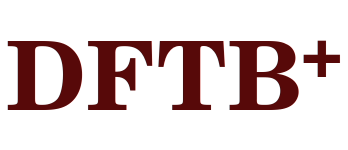Features
The latest stable release has capabilities including:
DFTB and xTB hamiltonians
Non-scc and scc calculations for clusters and periodic systems (with arbitrary K-point sampling)
Spin polarized calculations with colinear and non-colinear spin
Dispersion correction (D3, D4, many-body and Tkatchenko-Scheffler)
3rd order correction and other DFTB3-features
Ability to treat f-electrons
LDA+U (DFTB+U) extension
Spin orbit coupling
Pseudo self interaction correction
Various types of external electrical fields, QM/MM coupling via fields
Time dependent DFTB in the Casida-formulation
Calculation of non-adiabatic coupling vectors
Optimizer to search for conical intersections (CIs)
Range separated ground state calculations and excited state calculations for spin free singlet systems
Real time electronic and coupled electron-ion Ehrenfest dynamics
REKS (spin-Restricted Ensemble Kohn-Sham) calculations for ground and low-lying exited states
Delta DFTB for lowest singlet excitated state
Electron transport calculation via non-equilibrium Greens function technique (also for systems with colinear spin)
Phonon transport calculations
Particle-particle random-phase approximation (pp-RPA) for calculation of suitable excitations
Atomic potential responses in linear response
Extended Lagrangian Born-Oppenheimer MD (XLBOMD)
ChIMES force field corrections for many-body effects in the repulsive potentials
Several implicit solvation models
Helical geometries supported for non-SCC calculations
Geometry and lattice optimisation
Vibrational frequency calculation
Molecular dynamics (NVE, NPH, NVT and NPT ensambles)
Support for meta-dynamics in MD via the Plumed library,
MPI- and OpenMP parallelisation
Usage of GPU for diagonalisation
Using DFTB+ via sockets
DFTB+ can be compiled as a library and linked to simulation packages
Automatic code validation (autotest system)
User friendly, extensible input format (HSD)
Additional tool for generating cube files for charge distribution, molecular orbitals, etc. (Waveplot)
